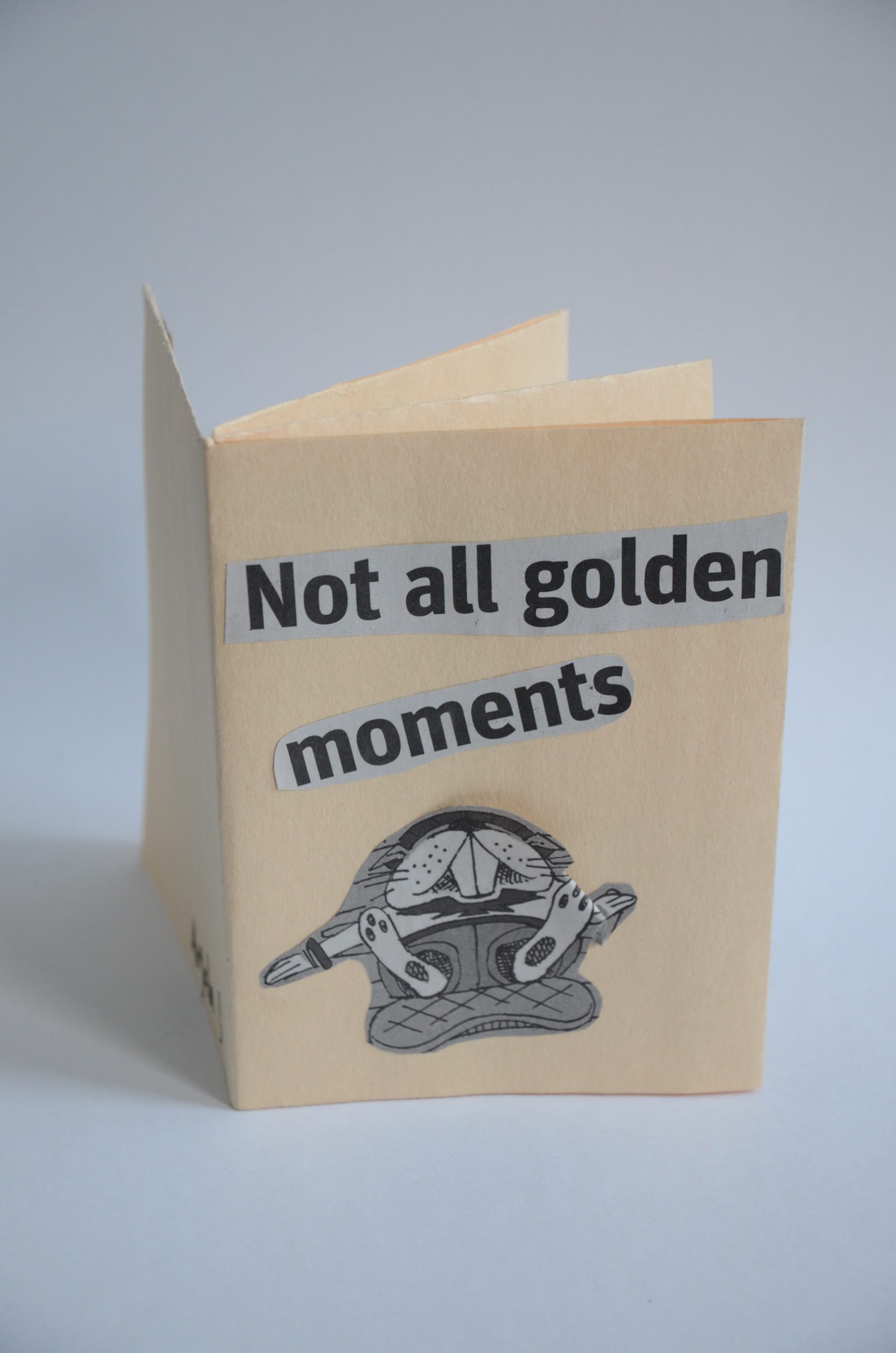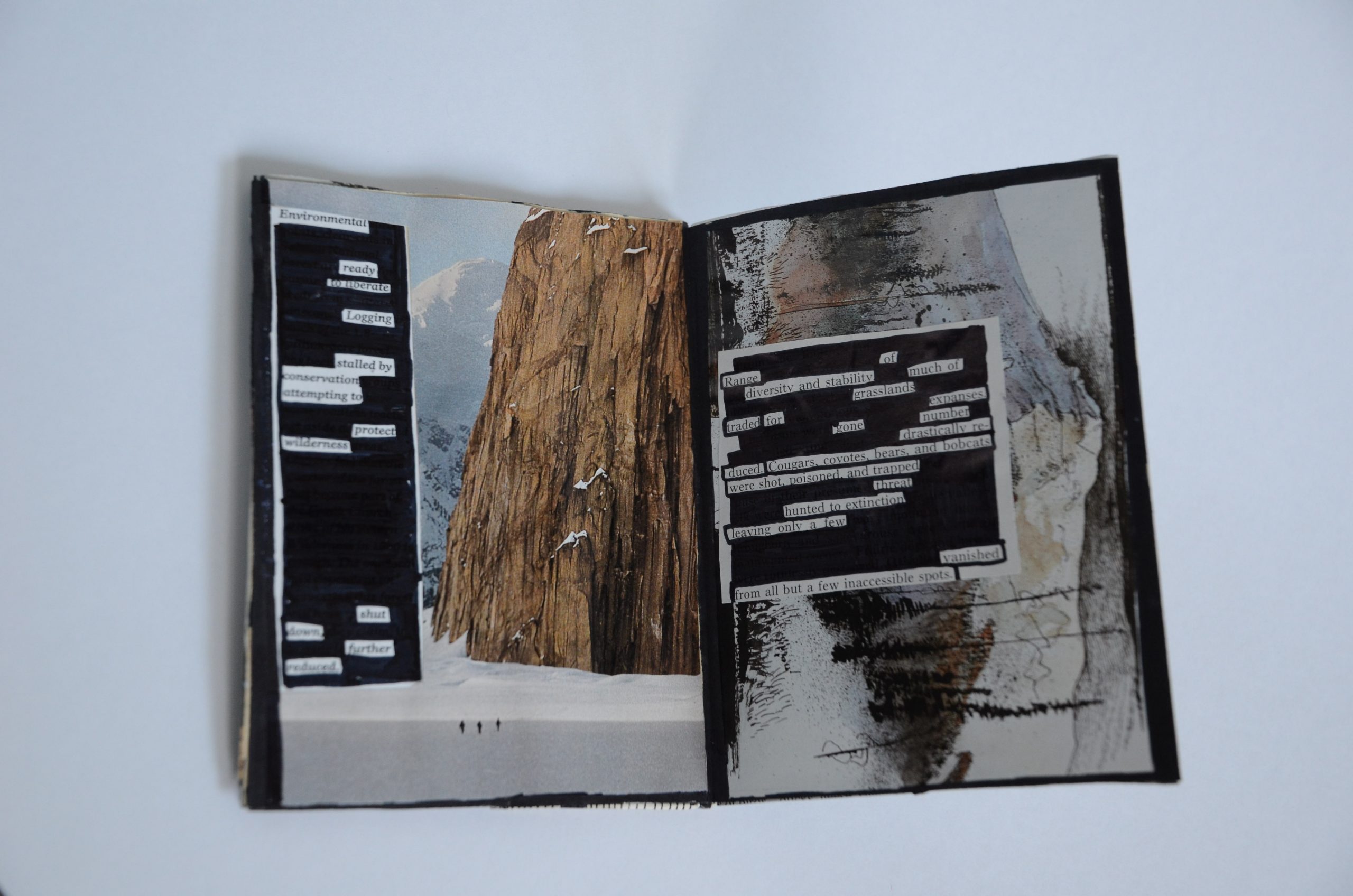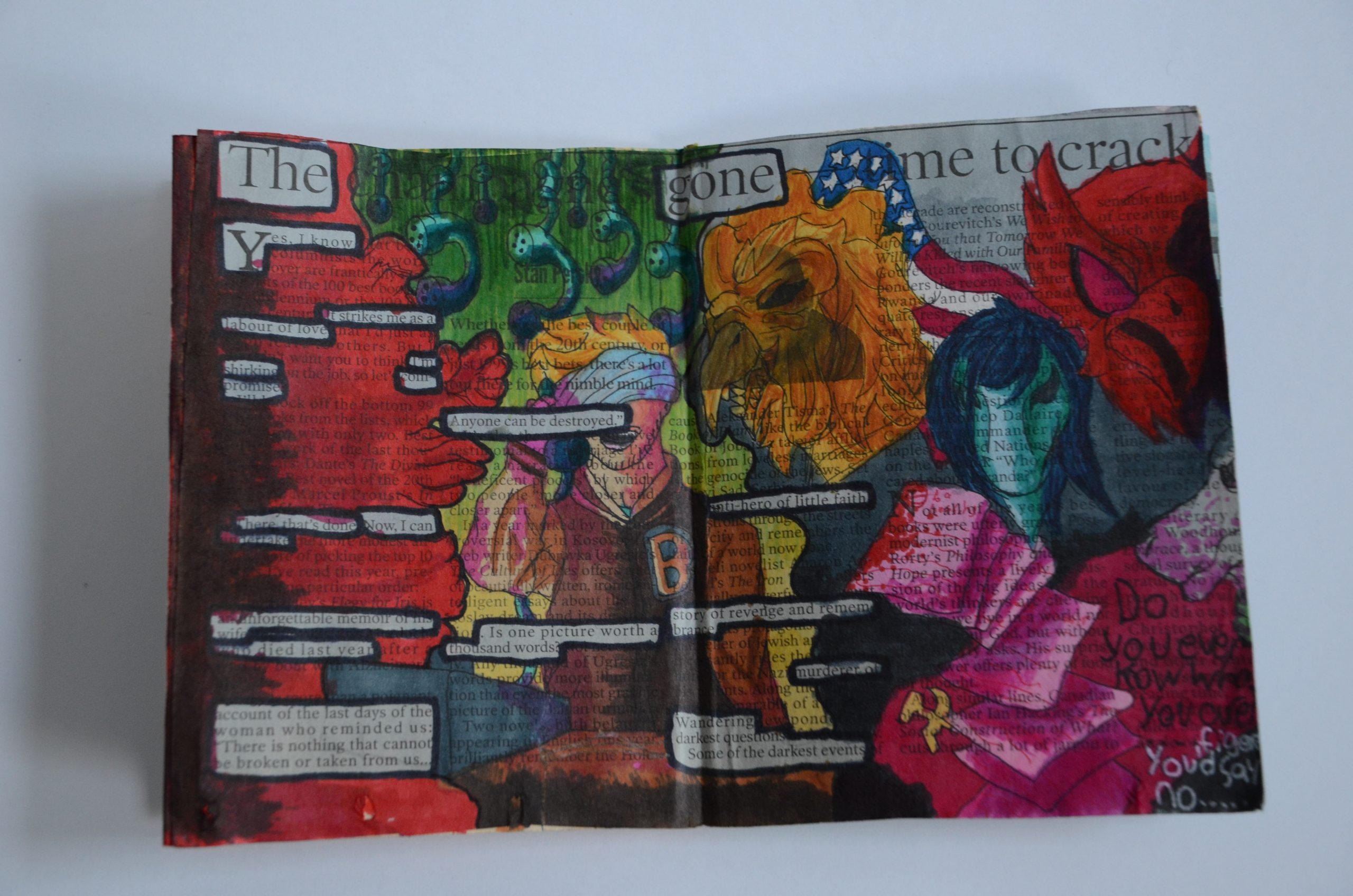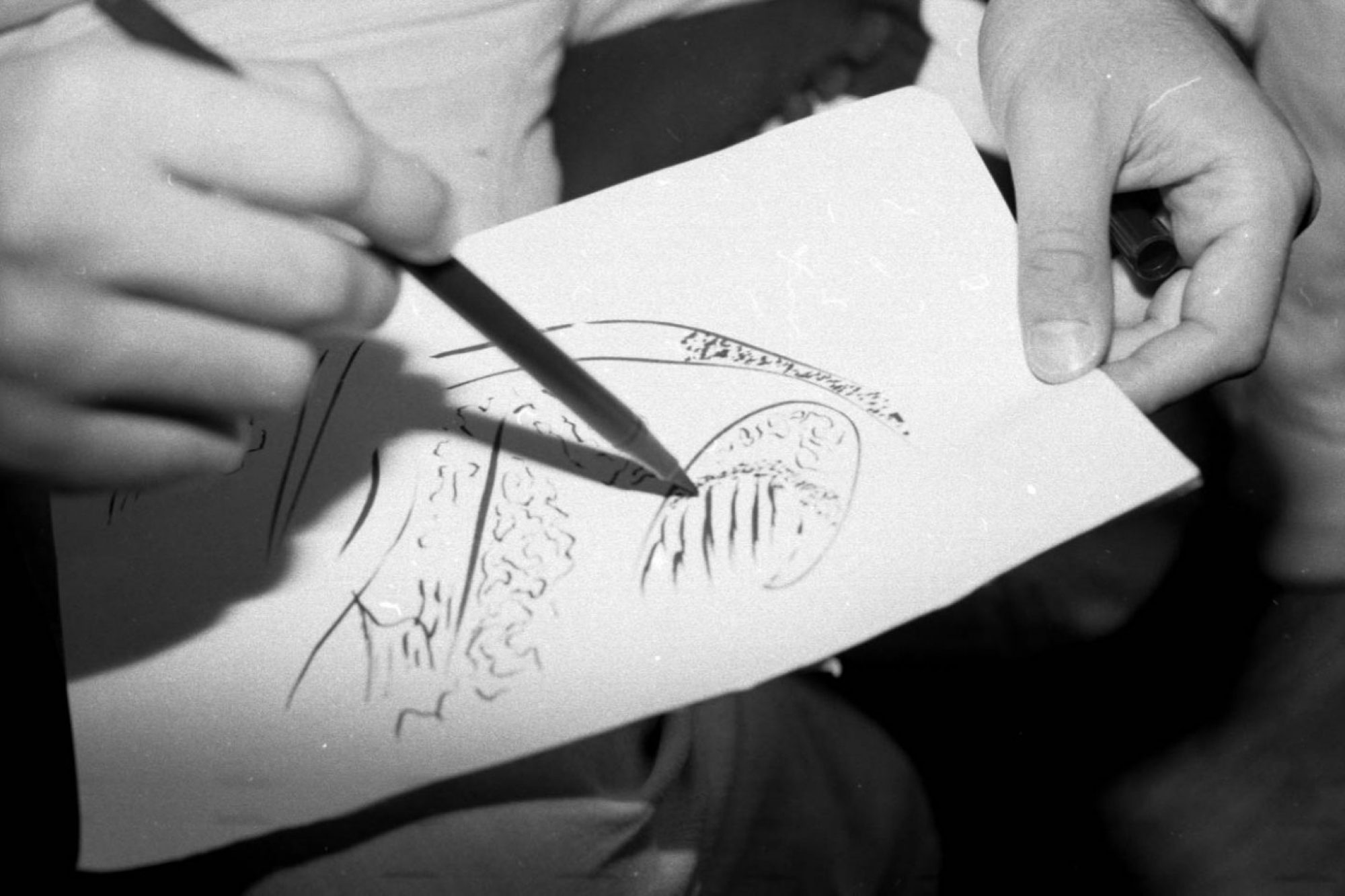
I wrote this reflection during my practicum after my first lesson on Redacted Poetry with my senior art class:
Talk back
I don’t know what to saypauseIamnotquickenoughtorespond
A shakey/ing finger (don’t – don’t
Do that)
I avoid conflict yet I bring up topics of conflict in my classroom every day?
Do I even know enough?
This belongs in the classroom
This belongs in the art classroom
Why this matters/Why I am doing
Mold space in such a little amount of time
Of opposition and brace.
I intertwined English and Social Justice into an art unit to encourage a critical art practice amongst a younger demographic. I found that art continued to be a subject of personal expression and individuality. In high schools, there is often is a lack of recognition as to how critical visual imagery can be in shaping political and societal structures. In order to address discomforting situations through the arts, I needed to be empathetic and communicative with my students.

Poetry is a blend between art and text, a bridge that invites others to collaborate and engage verbally and visually. It exists and is realized in an in-between space where the text starts with one author and ends with two (Irwin, 2003). Redacted poetry, also known as erasure poems, allow students to create new works from existing material. The poem originates from an existing body of text. Redacting originally means to “bring together” or “unite,” but it acquired a negative connotation later in English history to mean “take away”, “reduce” and “edit.” However, this very deletion and unwriting is a process that can help students grapple with difficult subjects of violence, poverty, and racism.

I provided newspapers from decades ago to the present. Newspapers are meant to alert and inform the public. As I was deciding what current events to discuss into the classroom, I found myself researching and learning along with the students to gain understanding of the Wet’suwet’en protests.
We tried to explore all perspectives, and I found it especially difficult as the adult in the classroom in providing the most accurate answers. Through my redacted poetry unit, both students and myself “surrendered” ourselves to exploration, artistic responsiveness to social injustice, rather than defending a singular aesthetic or answer.
References
Irwin, R.L. (2003). Toward an Aesthetic of Unfolding In/Sights through Curriculum.
